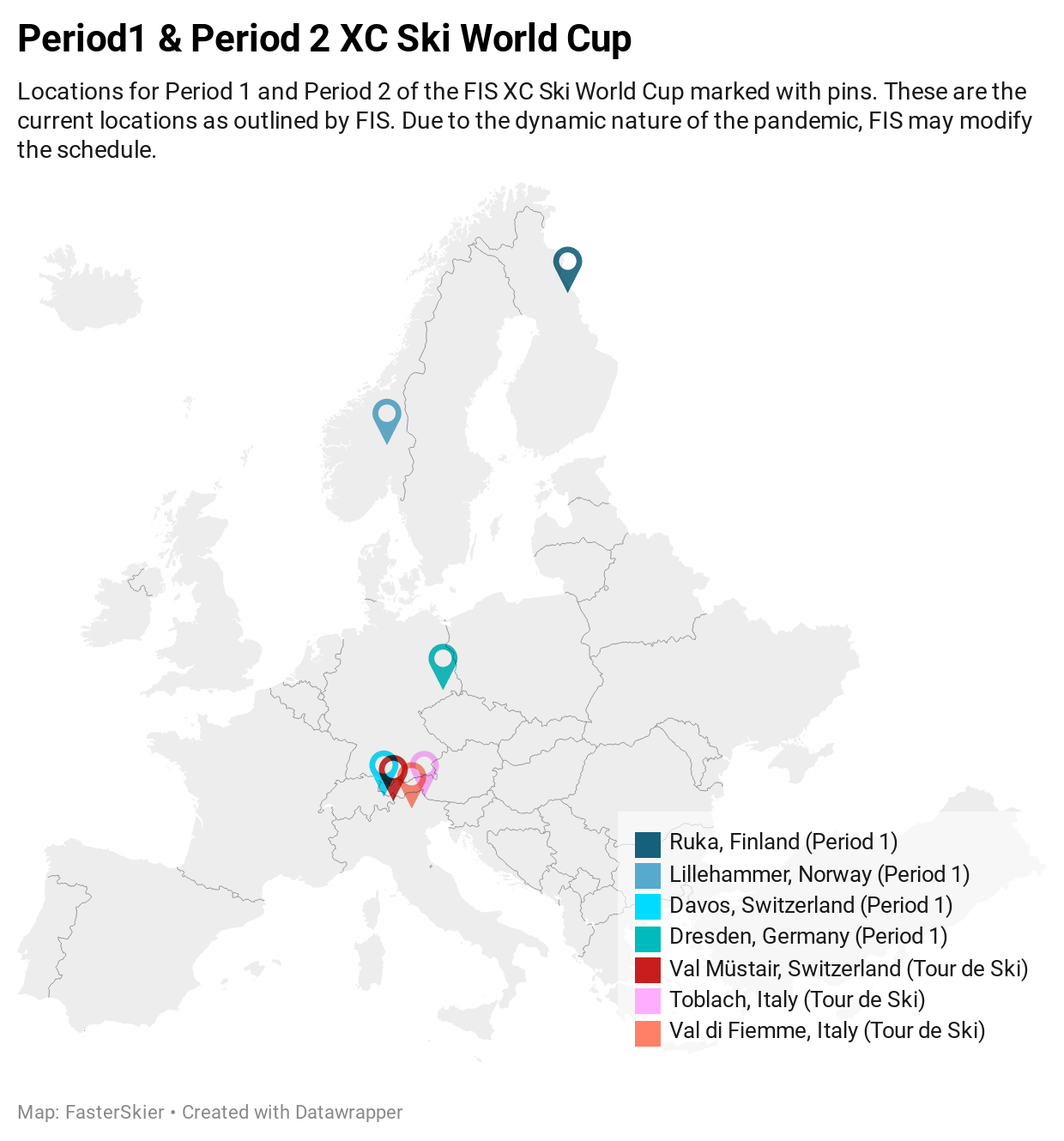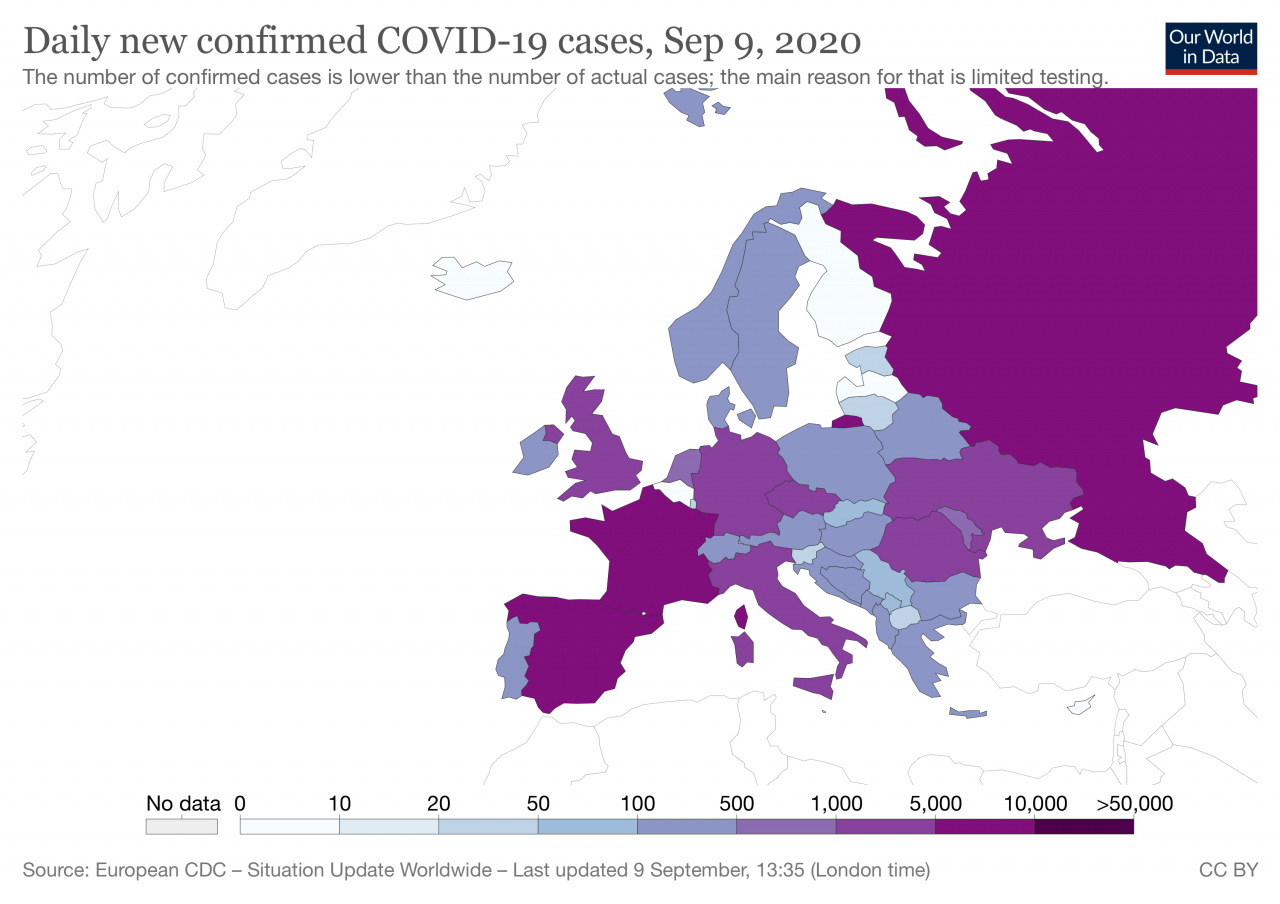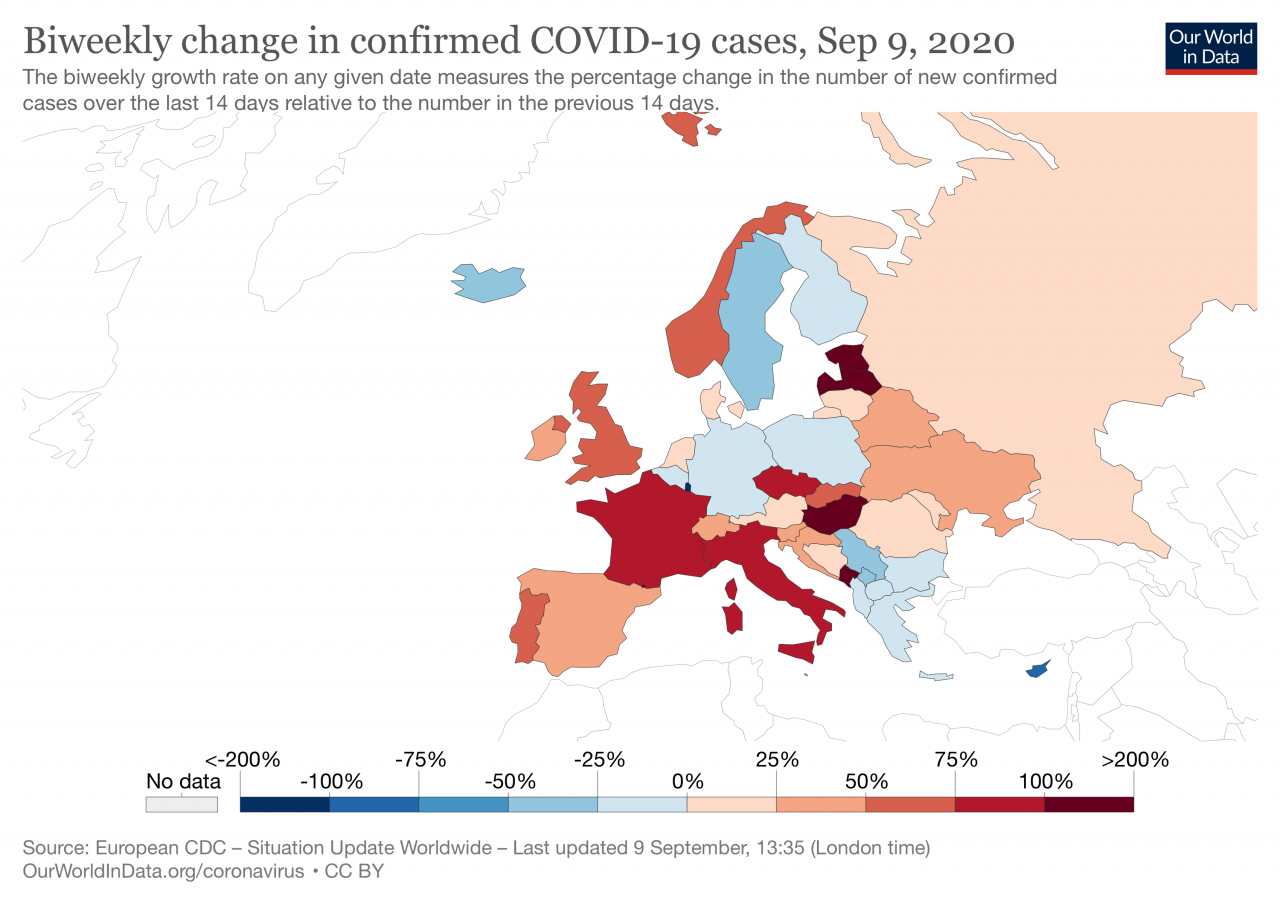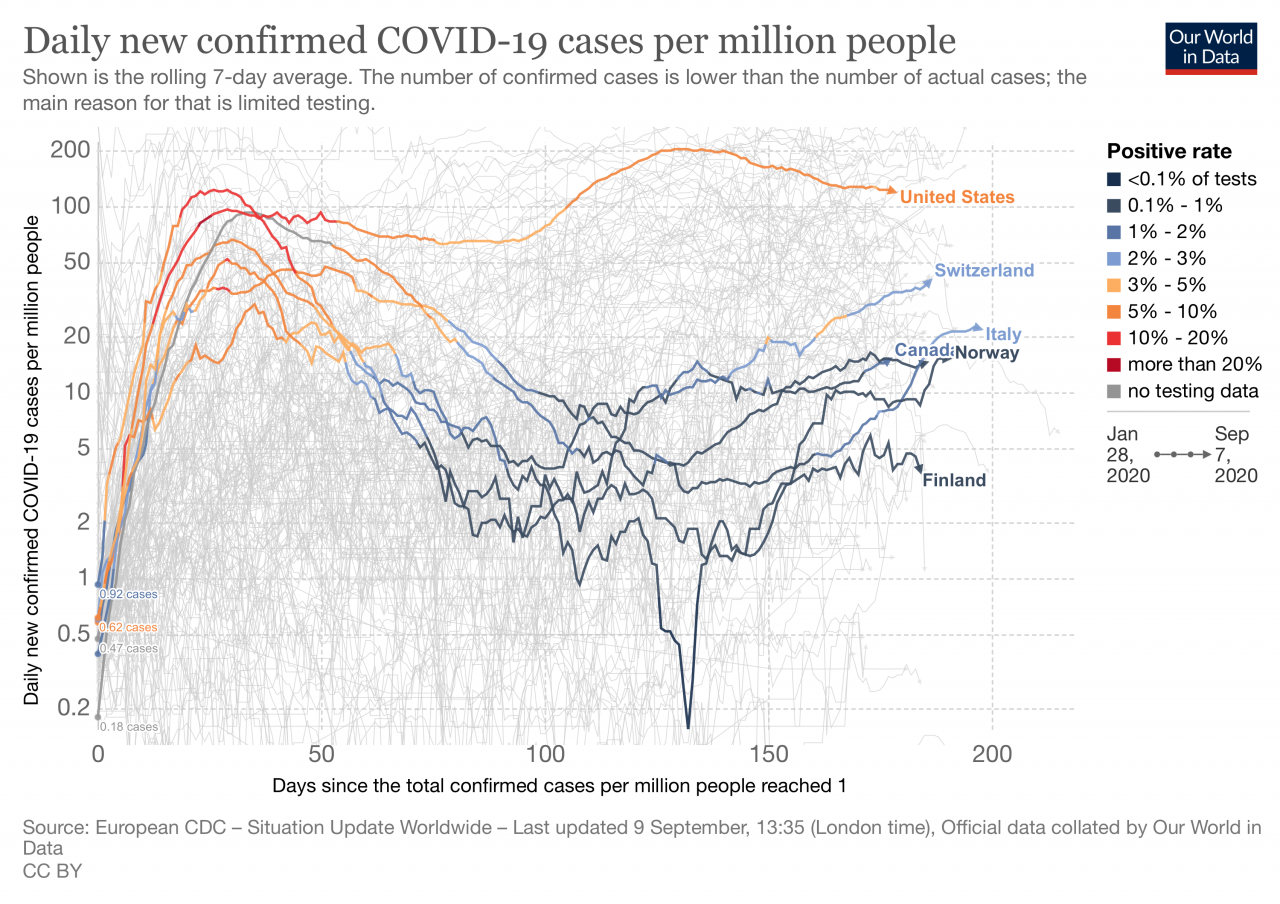 With the ever-evolving nature of the pandemic, two months out from our article titled “Covid-19 Trends and Early Season World Cups“, we thought it an appropriate time to review Covid-19 trends in Europe. If the International Ski Federation chooses not to modify Period 1 and Period II on the World Cup, Finland, Norway, Germany, Switzerland, and Italy will host already calendared events. In early June, when we first examined Covid-19 in those countries, the overall trends in terms of community spread were negative, with Switzerland the lone outlier as it experienced a rise in newly confirmed cases.
With the ever-evolving nature of the pandemic, two months out from our article titled “Covid-19 Trends and Early Season World Cups“, we thought it an appropriate time to review Covid-19 trends in Europe. If the International Ski Federation chooses not to modify Period 1 and Period II on the World Cup, Finland, Norway, Germany, Switzerland, and Italy will host already calendared events. In early June, when we first examined Covid-19 in those countries, the overall trends in terms of community spread were negative, with Switzerland the lone outlier as it experienced a rise in newly confirmed cases.
Fast forward two months and the landscape looks less optimistic. In the below map, we see all Period 1 and Period II host countries have macro-trends indicating increased daily new confirmed cases. The FIS has yet to finalize a schedule for this winter, yet it is worth revisiting the context within which FIS and relevant stakeholders will make decisions.
Below, we see that in much of Central Europe, daily new confirmed cases have increased when compared to similar data presented on July 6. Finland remains in good shape, whereas Norway is experiencing a setback.
The final map depicting the biweekly change in confirmed cases presents a mixed bag of trends. Finland, Norway, and Germany are trending towards fewer cases. However, Italy reports a 91 percent biweekly change (increasing), while Swizterland reports a biweekly 36 percent increase. 
Skiers expected to compete on the World Cup this fall should have no problem entering Europe despite strict travel restrictions for Americans. As professional athletes, many skiers are able to secure the appropriate visas for European travel. U.S. Ski & Snowboard posted on Twitter that the U.S. Alpine Ski Team women’s speed team is already back in Europe.
One of the key regulations to keep an eye on as FIS finalizes its schedule is the cap on people attending organized events. The Norwegian Institute of Public Health updated its policy on August 21. Events with up to 200 people “in public places” are currently allowed. According to the policy, “employees or contractors who are responsible for the event are not counted in the number of participants at the event,” but those 200 people do include “participants, audience, parents/ siblings/ companions and others who are present.” Sporting events in Norway must adhere to these guidelines.
Digging deeper, the policy leaves some wiggle room for hosting a World Cup. For longer duration events, organizers are allowed to “replace” participants. So the prospect of a ski race where the men’s and women’s fields rotate on site once a race is completed appears plausible. The policy also states that “top athletes performing in sports events” are exempt from social distance requirements during the competition “if it is necessary for the activity to be performed normally.”
Jason Albert
Jason lives in Bend, Ore., and can often be seen chasing his two boys around town. He’s a self-proclaimed audio geek. That all started back in the early 1990s when he convinced a naive public radio editor he should report a story from Alaska’s, Ruth Gorge. Now, Jason’s common companion is his field-recording gear.





